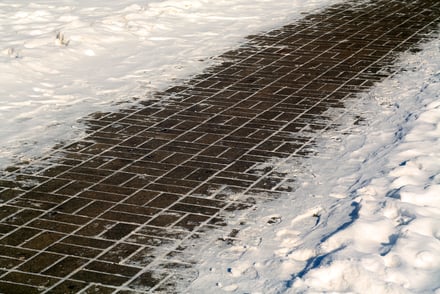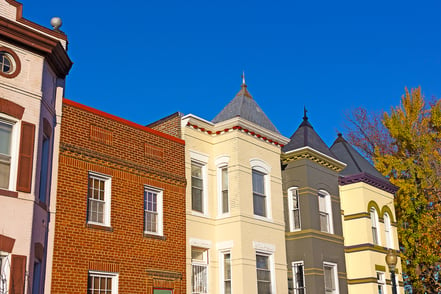The sturdy construction, character, and timeless exteriors of historic properties exude lots of charm and curb appeal, so it's no wonder they continue to be popular investments for home buyers. The importance of maintenance, especially routine tuckpointing, is an essential part of ownership. Tuckpointing consists of removing and replacing mortar between the bricks and it’s sometimes (mistakenly) believed to be an "easy" job, but it’s not so straightforward with historic brick homes. Typically, when it is necessary to do a tuckpointing job on a historic home, it’s always best to hire a licensed professional to do the work, and to determine whether a permit is required for tuckpointing.
What is Tuckpointing?
All mortar gradually deteriorates over time. Tuckpointing removes and replaces the old mortar between your home's bricks. This procedure ensures that fresh mortar is uniformly applied, giving the illusion that the joints between bricks were just freshly laid. In addition, tuckpointing ensures the brick can shed moisture effectively and withstand the changing seasons, especially the freeze-thaw cycles of winter.
Although 'tuckpointing' and 'repointing' are frequently used interchangeably, the final product differs. Both procedures involve removing and replacing deteriorating mortar, but tuckpointing creates a sharper, cleaner line and projects the look of new masonry work. On the other hand, repointing lacks some of the critical steps found in tuckpointing. As a result, it can have a softer effect which can create a “less square” appearance - and may sometimes even look “wavy” - as opposed to the enhanced look of the brickwork that can be accomplished by proper tuckpointing.
With the finesse required for tuckpointing, it is in your best interests to seek out a historic brick professional with the expertise to achieve this classic look and maintain or restore the stately nature of your brick. Their expert knowledge of the right materials and methods to employ when tuckpointing is an equally important reason to seek out these craftspeople.
Proper Materials and Techniques are Key for Tuckpointing
Using traditional lime-based mortars is paramount when working with historic homes. Contemporary concrete mixes can damage historic brick due to the mixture's high compressive strength and rigid nature. This mismatch results in cracked, broken, and spalling bricks. Traditional lime-based mortars allow the historic brickwork to wick moisture away, protecting the brick and preventing water from infiltrating your home.
Using lime-based mortar and hiring experts who specialize in tuckpointing historic brick is about more than just curb appeal and a long-lasting finish. Unlike today's brick homes, historic brick homes built before the 1920s do not have the same sort of structural support. Instead, it’s important to recognize that the building's integrity is generated by the brick itself.
Why a Permit is Often Needed to Tuckpoint a Historic Brick Home
Since historic brickwork is not a veneer, problems with the mortar could indicate structural problems, so permits are often necessary. However, differentiating between structural and cosmetic concerns can be challenging for homeowners. An additional challenge is that even when a problem is not structural, homes with historic designations may still require a permit to ensure the work does not compromise the historic integrity of the building. A professional historic home expert can help you determine whether permits are needed. The experts at Renaissance Development will ensure you have all the necessary permits and that the work meets all regulations, including historical home designations. The Renaissance Development team will save you time, money, and hassle by managing the project safely and professionally.
Contact the experts at Renaissance Development when you're ready for a complimentary tuckpointing consultation, or for any other advice you may need regarding your historic brick home. Call us at 202.547.2345 and ask about our Spring Promotion or click the button below to save 10% on any project contracted by June 20th. By working with an expert, you'll preserve your home's historic integrity while obtaining a long-lasting result that provides excellent curb appeal.
Tags:
Repair, Restoration, Renovation, Exterior brick, Tuckpointing job, Spot tuckpointing, old brick, lime mortar, tuckpointing, historic brick home, historic brickJun 1, 2023 8:30:00 AM


